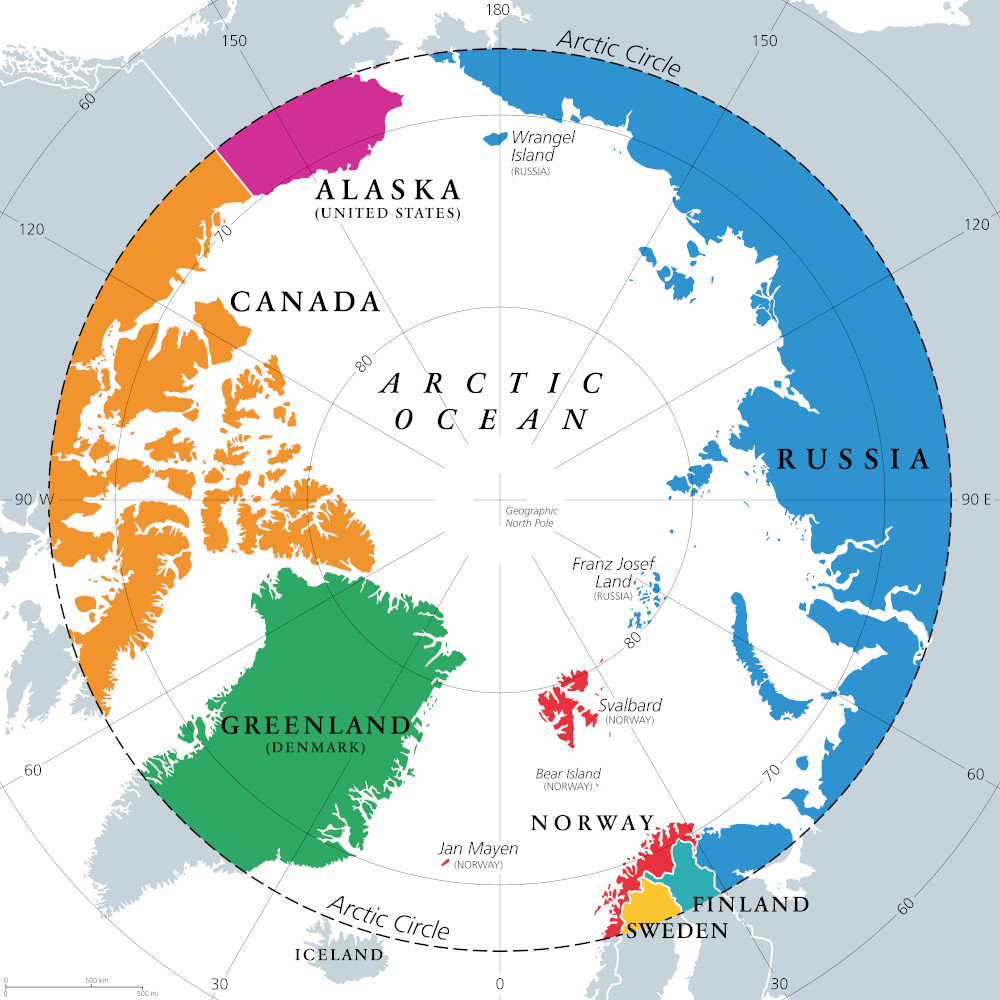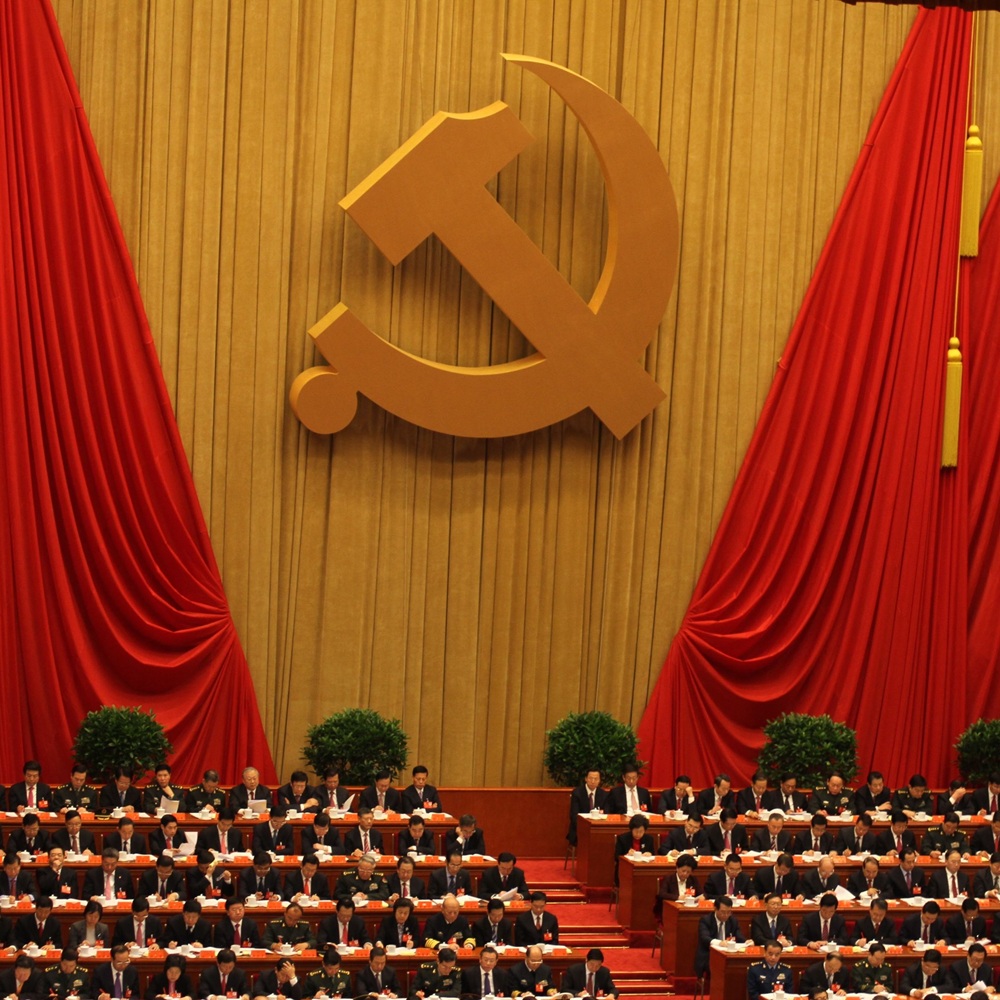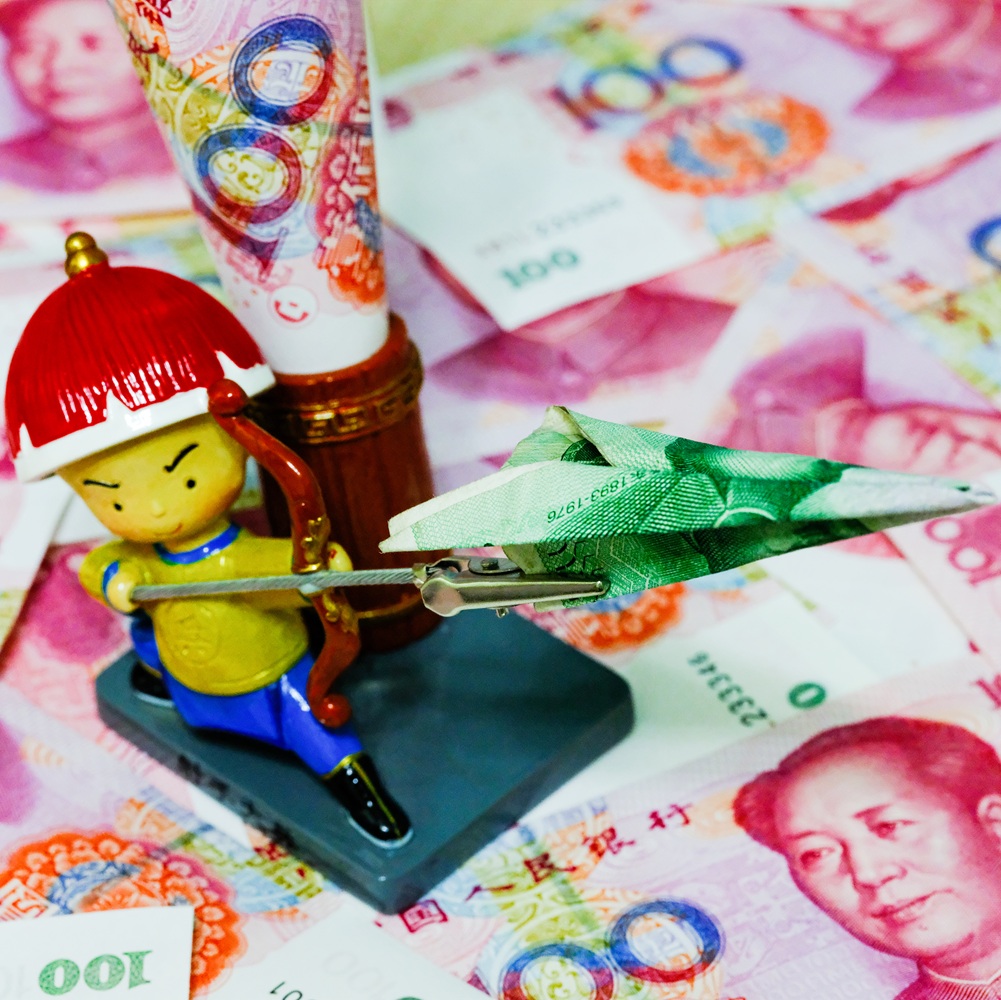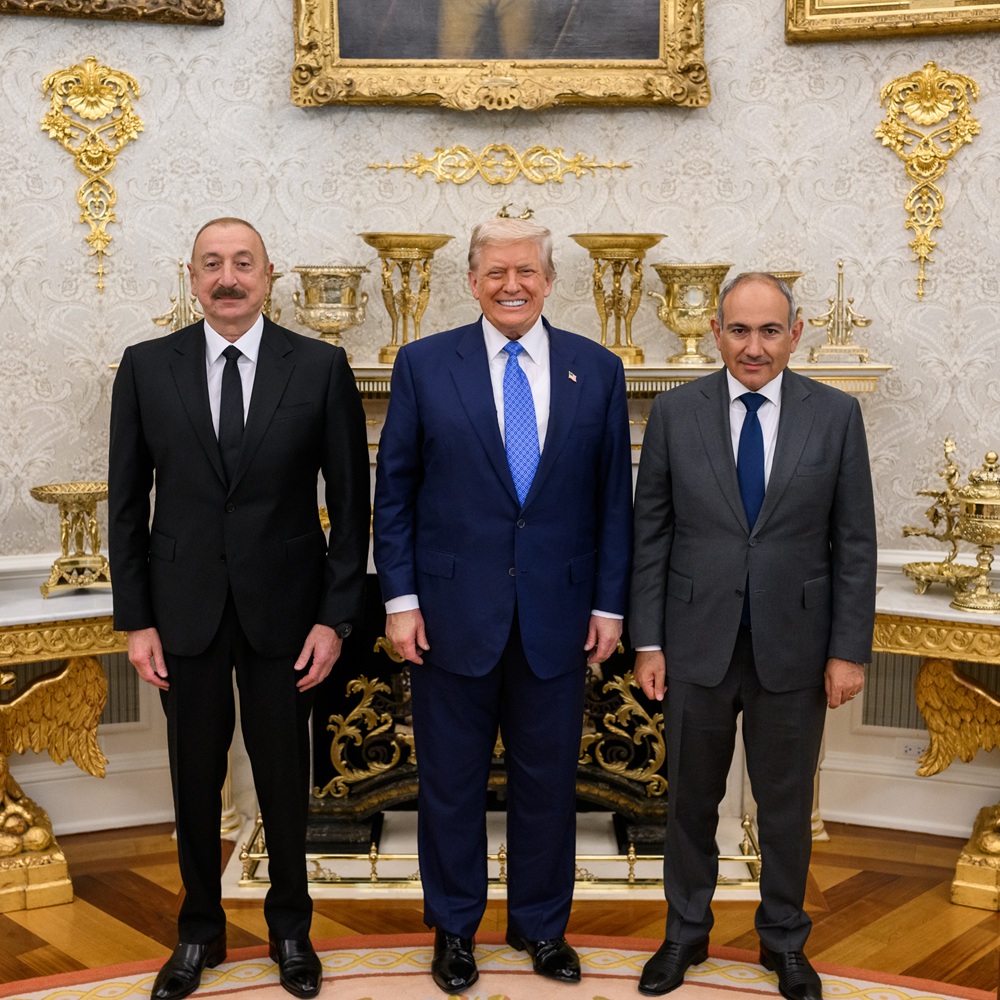Arab-Israeli Mix: Low-scale Protests and the Increase in Terrorism Following the Outbreak of the Swords of Iron War
by Gadi Hitman , Nesya Rubinstein-Shemer
AbstractThis article seeks to examine the behavior patterns of the Arab society in Israel since the Israel-Hamas War began in October 2023. The uniqueness of this population is the ethnic-national and religious differences between it and the Jewish majority and their identification with the Palestinians. Theoretically, the behavior patterns will be analyzed using a model of three variables: religion, citizenship, and nationality. This qualitative study, based on interviews, media clips, and public statements by Arab public leaders, identifies several opposing trends: an increase in the scope of terrorism, protests on a limited scale, and the lack of a uniform response by the Arab leadership to the Hamas attack and the war that followed it.KeywordsArab society in Israel, terror, protest, leadership, Hamas, citizenship, identity Introduction On October 7, 2023, Hamas-led militants attacked Israel, killing more than 1,100 Israelis, including at least 20 Arab citizens. The Israeli response was a declaration of war on Hamas, which led to mass destruction within the Gaza Strip. As of December 2024, according to the Palestinian Ministry of Health in Gaza, more than 46,000 Palestinians have been killed by Israeli forces (AP, 2025). This is the highest number of victims on the Palestinian side since 1948. This figure raises a question regarding the reaction of Arab society in Israel, whose ethnic-national identity is the same as that of the Palestinians in the Gaza Strip and the West Bank. Scholars dealing with majority–minority relations, as in the case of Jews and non-Jews in Israel, tend to agree that 1948 was a turning point that affected the mutual relations between the parties. Israel became a sovereign state for Jews, which obliged it to establish a policy toward the non-Jewish minority, also called the Arabs in Israel. The established policy was based on two pillars: First, Israel sought to be a democracy, and hence, basic rights, such as citizenship, were given to the Arab minority. Second, Israel saw the Arab minority as a security threat due to its ethnic and religious affinity with the larger Arab world. This concern led to the imposition of a military administration (1948–1966) on the Arabs in Israel, which led to the creation of, on the ground, the following reality: a Jewish majority lives alongside an Arab minority. Both sides held common citizenship but differed in two characteristics, religion and nationality. This is how majority–minority relations revolve around a fixed triangle that serves as a basis for analyzing mutual relations both in routine and in cases of tension between the parties (Boimel, 2007). Historically, the Arabic society in Israel has recorded many incidents of protests on national, religious, or civil grounds. Protest events that degenerated into violence included 1958 events in Nazareth; on Land Day in 1976; in 1982 after the massacre in the Palestinian refugee camps in Lebanon (Sabra and Shatila); in the case of Umm el-Fahem lands in 1998; in the events of October 2000, and in May 2021 (Hitman, 2023). The ongoing war between Hamas and Israel since October 2023 is another case study that makes it possible to analyze the behavior of Arab society in Israel. Theoretical Framework The interaction between the state (or regime) and the people, namely, civilians, residents, illegal immigrants, and foreigners, is among the prominent topics that have been studied in recent decades (Coutin, 2011; Nyers, 2018). The existing sociological, political, anthropological, and legal literature delineates and analyzes case studies of confrontations between these parties worldwide. When case studies of mass protest or collective violence are discussed, the relevant questions are why, when, or what led to the clash between the state and the people and what led to an escalation. Every group of people has six potential methods to use when it is forced to respond to a regime’s policy or when it strives to achieve its goals through self-initiative: dialogue, separatism, indifference, identification, protest, and violence (Hitman, 2020). Israel is a multicultural country with a heterogeneous population consisting of Jews and non-Jews. Within these two categories are cultural subcategories: among the Jews, there are ultra-Orthodox, religious, traditional, and secular communities. Among the non-Jews, there are Arabs (Muslims and Christians), Druze, and other religious, ethnic, and linguistic minorities who have cultural freedom. As far as this study is concerned, the analysis distinguishes between the Jewish majority and the non-Jewish or Arab minority, whose religious and national identity is not that of the Jews. The cultural, religious, ethnic, and national diversity in such diverse societies raises questions about minority rights and how to achieve them. The differences between the Jewish majority and the non-Jewish minority are religious and national. The common denominator is that they are all citizens of Israel. The differences between the groups within Israel and the fact that the Israeli-Palestinian conflict has not yet come to a solution create a basis for friction between the parties on religious, national, or civil grounds. The last outbreak in May 2021 came after more than two decades of peaceful relations between the Arab minority and the Jewish majority following the events of October 2000 (Barnea, 2024). During these decades, Israeli Arab citizens, most of whom define themselves as Palestinians, had several opportunities to escalate the security situation within the state and challenge the regime: Operation Defensive Shield in Jenin (2002), the Second Lebanon War (2006), Operation Cast Lead (2008), the Marmara Flotilla (2010), Operation Pillar of Clouds (2012), Operation Protective Edge (2014), and the Nation-State Bill (2018) passed by Knesset. In all these cases, the Arab Israeli citizens’ response was to protest within the framework of the law (Frisch, 2017). The conceptual framework and the brief historical overview allow a discussion of the action patterns of Arab society in Israel following the war that began in October 2023. Even if the end date of the war is still unclear, it seems that after more than a year of ongoing hostilities, certain trends within this population can be pointed out. This article seeks to assert two preliminary claims. First, the scale of protest by Arab society in Israel in response to the war in Gaza is low and offers several explanations for this. Second, there has been a moderate increase in the scope of terrorism by individuals within Arab society, apparently due to the influence of the war. The article also aims to analyze the public statements of the Arab leadership in Israel and examine whether there is a consensus or differences in approaches that originate from different ideologies. Based on the triangle model of citizenship, nationalism, and religion, the study hypotheses are: 1) The increasing number of terrorist attacks, as noted below, carried out by Israeli Arabs since October 2023 indicates identification with the Palestinians in Gaza on a national basis. 2) The limited number of protests within the framework of the law reflects a tendency of most of the Arab public to prefer Israeli citizenship over national or religious identification with the Palestinians and with Hamas. 3) The public positions of the Arab leadership reflect ideological differences: Mansour Abbas adheres to a civil partnership, while his political opponents from the Joint List cling to their Palestinian national identity. Methodology This study adopts a combined qualitative and quantitative methodology based on the three hypotheses it seeks to confirm or refute. In the quantitative aspect, it maps the cases where there was a possibility of protest or violence on the part of the Arab society in Israel following the outbreak of the war in October 2023. Such events could be protests against the delivery of the law, clashes with the security system, or terrorist acts against Jews. Qualitative research aims to examine feelings, ideas, and experiences that are often impossible to translate into quantitative numerical data. The religious, national, or civil narrative is the most common tool to examine feelings and thoughts in qualitative studies because it allows researchers to analyze testimonies from their statements and activities. Thus, qualitative methodologies are likely to be used when seeking perceptions, opinions, and approaches, as in this specific study (Ugwu & Eze Val, 2023).In the qualitative aspect, statements were collected from the Arab society on social networks, leading Israeli and global news websites, and statements from public figures at the national level. It was then analyzed according to keywords relevant to this study, such as Israeli occupation, jihad, condemnation of Hamas terrorism, support for Palestinian terrorism, and identification with the victims in Israel and Gaza. Incidents of Terrorism In general, the number of Israeli Arabs involved in terrorism since 1948 is low (Abu Mookh, 2023; Kobowitz, 2019). Despite ethnic-national and religious diversity, which creates significant potential for sparking violence, various reasons have led to a trend of low-volume terrorism. An analysis of the data in the decade preceding October 2023 reveals the following picture: 1) According to the Israeli Security Agency (ISA), in 2013, the involvement of Israeli Arabs in terrorist attacks continued to be minor. The characteristics of terrorism in this case were twofold: going to Syria and joining ISIS or connecting to terrorist infrastructures of Palestinians in the West Bank (Shabak, 2013). 2) Most terrorist incidents involving Israeli Arabs in 2014 (a total of 10 cases) were related to outbreaks of protest and disorder, which included the use of Molotov cocktails attacks against Jewish drivers and setting fire to their cars. One case of the murder of a young Jewish woman by a Bedouin taxi driver stands out (Shabak, 2014). 3) In 2015, there was an increase (a total of 41 Israeli Arabs joined ISIS; a total of 15 terror attacks) in the scope of terrorism committed by Israeli Arabs: shooting and stabbing attacks in which 2 Israelis were killed and 13 wounded. This was also a year in which ISIS was at its peak, and this affected dozens of Israeli Arabs who joined its ranks. ISIS terrorist cells were exposed in several Arab communities, and Israel’s security forces arrested 41 Israeli Arabs (Shabak, 2015). It was likely due to the influence of propaganda by ISIS, which included calls to harm infidels. Between 2018 and 2022, the trend of terrorism by Israeli Arabs continued on a low scale (Abu Mookh, 2023; Kobowitz, 2019). An exception was the month of May 2021, in which violent clashes occurred between Arabs and Jews and security forces (Wall Guard incidents). These attacks resulted in the deaths of 14 Israelis, the vast majority of them members of the security system, such as soldiers and police (Nassar, 2022; Schlesinger, 2018). Regardless, the average number of attacks carried out by Israeli Arabs was four per year, significantly lower compared to the number since the war in Gaza began in October 2023. This indicates that the majority of Arab society has chosen to uphold the law and not risk punishment on criminal or security grounds that have the potential to harm the chances of integration into Israeli society. In this case, the civil element prevailed over the other elements in the relationship triangle. Based on media reports, since October 7, 2023, there has been a real increase in terror attempts and attacks by Israeli Arabs against Jews (mainly security forces). Based on various media and newspaper sources, one can identify that at least 13 cases were registered since October 7, of which Israeli Arabs executed 9 attacks and 4 were thwarted by the Israeli security forces. An analysis of these cases leads to the following insights. First, most of the perpetrators chose to commit stabbing attacks (six cases). In other cases, there were mob attacks, throwing stones, and one an attack that was a combination of a mob followed by an attack with an ax. Second, all involved were males between the ages of 13 and 28. An unusual case involved 9- to 10-year-old children throwing stones in the city of Lod (central Israel). Third, two Jews were murdered, and at least ten were injured, some of them severely. Fourth, all the attacks that were not thwarted were carried out by a single attacker and without the support of institutionalized terrorist organizations. Most of the victims were killed, and most of the perpetrators were affected by the security escalation in Israel, which is also a combination of religious (Hamas) and national (Palestinian) identification of the perpetrators. Finally, a geographic analysis of the attacks indicates diverse areas that include the north of Israel (4), the center (3), and the south (2) (Elbaz et al., 2024; El-Hai & Zeitoun, 2024; Eli & Moghrabi, 2024; Lalotashvili, 2023). An analysis of the terrorist attacks by the Arab population in Israel would not be complete without referring to terrorist attempts that the security forces in Israel managed to thwart. In March 2024, the Israeli media revealed that the Shin Bet and the police had uncovered a cell headed by Muhammad Khaled and Muhammad Yosef, residents of the city of Sakhnin (northern Israel). They intended to carry out terrorist acts in Israel, and members of their group purchased weapons originating from the West Bank. Khaled was in contact with the Hamas infrastructure in the Gaza Strip, which provided him with instructions for preparing explosives and directed him to recruit more members to promote terrorist activity (Alkalai, 2024). A senior police officer estimated that the events of the war in Gaza led to the decision of several individuals to establish a terror cell as part of their identification with Hamas. As part of the cooperation with the Palestinians (Hamas members from the Gaza Strip), the possibility of damaging strategic facilities within Israel was also examined (Hachmon, 2024). In July 2024, three young civilians from Kalansawa (central Israel) were arrested on suspicion of having contact with Palestinian terrorists from the West Bank and supplying weapons to terrorist elements. As part of the investigation, among other things, a pipe bomb, an M16 rifle, a Carlo rifle, another gun, and ammunition were seized (Diaz, 2024). In April 2024, a terrorist network consisting of Arab Israelis and Palestinian residents of the West Bank was exposed for conspiring to carry out serious and extensive terrorist activity throughout Israel (Koriel et al. 2024). The head of the cell is Bilal Nasasara, an Israeli Arab living in Rahat in the south of the country, who was responsible for recruiting operatives from Israel. During their investigations by the ISA, it was revealed that the suspects planned to carry out attacks near IDF bases and secure facilities, including the Ben-Gurion Airport. They also planned to assassinate the Minister of National Security Itamar Ben-Gvir after obtaining an RPG missile and kidnap IDF soldiers (Hacohen, 2024). Casualties among Israeli Arab Society following Hamas’ Attack The analysis of the terrorist data is only part of the characteristics and phenomena of the Arab society in Israel since October 2023. Close to 30 Muslim Arabs, citizens of Israel, were also murdered by Hamas (Goldman & Koplewitz, 2023) despite a fatwa from Hamas itself that forbids harming them (Izz al-din al-Qassam, 2022). Among the murdered were pregnant women (Sharon, 2023). These figures and the cases presented below illustrate the shared fate of living together as citizens of Israel. In this respect, the terrorist attack by Hamas did not distinguish between Jewish and Muslim victims. One of the prominent phenomena observed during the Hamas attack on Israel was the mutual guarantee between Jews and Muslims, all citizens of Israel. The story of Amer Abu-Sabila illustrates the shared fate of Muslims and Jews on October 7. Abu-Sabila, a 25-year-old father of two toddlers and an Israeli citizen from the Bedouin community in the Negev, saw Hodaya, the mother of two young daughters, in her car trying to escape the scene after her husband had been murdered before her eyes. Due to the intensity of the trauma, she was having difficulty driving, so Abu-Sabila got into her car to take her and her daughters to what he thought would be a safe place—Shderot police station. No one knew that at that time, armed terrorists were surrounding the police station building to take it over. When they arrived at the police station, Amer and Hodaya were murdered by Hamas terrorists, while the two little girls, aged 3 and 6, lay on the floor of the car in the back seat, witnesses to the horror (Times of Israel, 2023). Eventually, the two girls were rescued by the Israeli security forces who arrived at the scene a little later (Gabai, 2023). Abd al-Karim Nasasara from the Bedouin settlement of Kseifa in the Negev was also murdered by Hamas terrorists when he tried to rescue young people from the Nova music festival in Re’im (October7memorial, 2023). The 23-year-old Awad Musa Darawshe, from the northern Israeli village of Iksal, was in the festival complex as an ambulance driver and paramedic. When the terrorists entered, he found himself being approached by many wounded. He chose to stay and care for them until he was murdered (Hauzman, 2023). Yosef al-Ziadna, a resident of Rahat, was a minibus driver who took young people to the Nova festival on Friday. When frightened young people called him on Saturday morning at the start of the Hamas attack, al-Ziadna did not think twice and went to rescue them despite the entire area being under attack. With extraordinary bravery and despite continuous gunfire, he tried to save as many young people as possible. He managed to get 30 survivors of the massacre into his vehicle and save their lives. Al-Ziadna himself lost a relative who was murdered, and four of his family members were kidnapped to Gaza (Kidon & Cohen, 2023). Condemnations of the Hamas Attack among Arab Leaders The Arab political leadership in Israel is divided upon ideological lines: there are communists, Islamists, and nationalist parties. Among the Islamic parties is the United Arab List or the southern branch of the Islamic Movement (hereafter: Ra’am), headed by Knesset member Mansour Abbas. Ra’am represents the southern faction of the Islamic Movement in Israel. In contrast, the northern faction of the Islamic Movement, led by Sheikh Raed Salah, was outlawed by the State of Israel in 2015. On the other side, there are nationalist parties—Balad, led by Sami Abu Shehadeh, and Ta’al, led by Ahmad Tibi—and the communists (Hadash), led by Ayman Odeh. This section examines some of the statements of Arab leaders in the wake of the October 7 attack (Hitman, 2018). Mansour Abbas was the first Arab leader to condemn the Hamas attack as early as noon on October 7, when the dimensions of the disaster were not yet so clear. On his Twitter account, he denounced the “unfortunate, tragic, and obscene” events and called on all citizens of the country, Jews and Arabs, to behave responsibly and not be drawn into incitement. On October 10, he called on Hamas to release the abductees in their hands because “Islamic values command us not to imprison women, children, and the elderly” (Abbas, 2023). On November 6, he became the first Arab leader to meet with the heads of the families of the abductees (Shavit, 2023). On November 10, Abbas said in a TV interview that since the beginning of the war, he had been working as hard as possible to help free the hostages by appealing to religious leaders in the Muslim world. He watched the documentary Bearing Witness to the October 7th Massacre to feel the pain of the victims (Shinberg, 2023). Abbas also called for the removal of Knesset member Iman Khatib Yassin from his party, who claimed there was no massacre. He came out against the Balad demonstration that took place the day before—November 5, 2023—and claimed that Balad does not represent the mindset of Arab society. What does represent the mood in Arab society, according to Abbas, is the survey conducted by the Israel Democracy Institute in November 2023, which showed an unprecedented record of 70% identification of Israeli Arabs with the state (Abu Mookh, 2023). He concluded by saying that the goal is for Jewish and Arab societies to overcome this crisis together in peace (Oko, 2023). Statements and actions of this kind reflected Abbas’s choice of a civil partnership between Jews and Arabs in Israel, a position he has been advocating in recent years and stands in contradiction to the position of other political parties that prefer to highlight the Palestinian national identity. In another survey conducted by the Israel Democracy Institute (December 25, 2023), more than half of Arab society supported the positions of Abbas, according to whom the Hamas attack does not reflect Arab society and the values of Islam. Furthermore, most Arab societies supported the war effort (As’ad & Kaplan, 2023). Ahmad Tibi condemned the harm to civilians (but not fully), hurled accusations at the government and the Israeli right wing, and wrote about the need for an end to the occupation and peace for all parties (Tibi, 2023). On October 11, Tibi spoke about the efforts he was making to prevent incitement in the mixed cities, and on October 13, he addressed the Knesset, speaking about the difficult times and the horrific acts of murder committed in the South. He also spoke about the fact that there were Jewish victims as well as Arabs (Muslims) and condemned the events, but at the same time, he stated that revenge in the Gaza Strip was not the solution to the conflict (Tibi, 2023). Ayman Odeh wrote on his Twitter account on October 10, 2023 that the blood of the innocent was crying out and that there was another way, the way of peace, to be realized through the vision of two states (Odeh, 2023). In another post on the same day, he wrote that he had made calls to console his Jewish friends from Netiv HaAsara, his Arab friends from the Negev, and his friends from the Gaza Strip for the loss of their loved ones (Odeh, 2023). On October 11, Odeh, like Tibi, wrote that he was trying with local leaders in mixed cities and with the police to prevent violence and called on the Arab public to show restraint and responsibility. On October 13, in his speech in the Knesset, Odeh stated that nothing in the world, not even the occupation, justified harming civilians. He claimed that revenge in the Gaza Strip is not the solution and that only a political solution aimed at peace would bring security (Odeh, 2023). Theoretically and empirically, these statements reflected rhetorics to merge authentic sympathy for the Israeli (Jew and Arab) victims and, at the same time, to call for a solution to the ethno-national conflict between Israel and the Palestinians. Sami Abu Shehadeh did not condemn the atrocities of October 7. Instead, he accused US President Joe Biden of giving Israel the green light to carry out ethnic cleansing of Gazans, expressing his pain about this (Abu Shahadeh, 2023). On October 17, Abu Shahadeh wrote on Twitter of the hypocritical Western approach toward Israelis and Palestinians. Given Biden’s visit to Israel on October 18, he asked whether Biden intended to pass through the Gaza Strip and see the Israeli damage or talk to the families of the injured Gazans (Abu Shahadeh, 2023). Raed Salah, the leader of the northern faction of the Islamic Movement, distributed a video on Al-Jazeera in which he addressed the international audience and asked every Muslim, Christian, and Jew to call for an end to the war (YouTube, 2023). He called on the public to spread peace, oppose damage to mosques, churches, and synagogues, and allow freedom of prayer. He spoke against harming the innocent: the elderly, women, and children (Al-Jazeera, 2023). In this video, Salah used general phrases about harming innocent people. There was no reference in it to the massacre committed by Hamas on October 7 or its condemnation. A month after the start of the war, Salah appealed in an interview on Al-Jazeera to every person of conscience in the world to call for an end to the humanitarian disaster in the Gaza Strip. In addition, he praised the European nations, who, unlike their governments, showed humanity and took to the streets (YouTube, 2023). Sheikh Salah’s activity reflects full religious identification with Hamas (both movements emerged from the Muslim Brotherhood). His call for a worldwide protest against Israel’s actions in the Gaza Strip was the maximum he could do. He chose not to incite a protest inside Israel because the faction he heads was outlawed, and he knew he risked another indictment. In this case, he took advantage of his right as a citizen in a democratic country to raise his voice without breaking the law. Kamal Khatib, Salah’s deputy within the northern branch of the Islamic Movement, also ignored Hamas’ atrocities and focused on accusing the Israeli side. On October 11, he wrote on Facebook that there was Jewish incitement against Arab Israeli leaders and that Jewish groups had distributed lists with the names and addresses of Arab leaders in Israel and defined them as a fifth column (Khatib, 2023). He said that the threats would not affect them or change their identity. He signed off the post with the following sentence: “We are getting closer to salvation, be happy” (Khatib, 2023). On October 24, he uploaded a video to the YouTube channel of Muwatini 48, a channel associated with the northern faction of the Islamic Movement, under the title: “Has the military government returned?” In the video, he said: “Since 7 October, what has happened in Israel, our people in the Palestinian interior have been exposed to an unprecedented attack.” He talked about gagging, preventing demonstrations, and preventing freedom of expression, as well as about the hundreds arrested and indicted. He concluded by saying he was not afraid of any threat and was proud of his Palestinian and Islamic identity (YouTube, 2023). In terms of reviewing the statements of the leaders of the Arab public after the massacre of October 7, their statements are not uniform and reflect personal (and collective) identity and ideology. The Islamic Movement’s Northern Branch was careful about expressing support for Hamas but emphasized religious and Palestinian identity. The nationalists focused on the Palestinian side being the victim of the conflict, and the communists called for a peaceful solution and coexistence between the parties. Anti-war Protests among the Arab Public Hamas attempted to recruit Israeli Arabs to its ranks as early as on October 7. In a recorded speech published on that day, Muhammad Deif, the commander of the military wing of Hamas, called on the Arabs of Israel to join Hamas (YouTube, 2023). Hamas sees the Israeli Arabs as a significant force that can help them in any conflict with Israel due to their proximity to major traffic routes and population concentrations (MEMRI, 2023). Previously, in May 2021, Hamas managed to mobilize the Israeli Arabs, who broke out in violent riots all over the country, especially in mixed cities (Hitman, 2023). Scholars in the Muslim world affiliated with Hamas also tried to harness the Muslim citizens of Israel for war against the State of Israel. For example, on November 7, 2023, the International Union of Muslin Scholars (IUMS) issued a fatwa regarding the duty of the governments of Arab countries and Muslims worldwide concerning the war in Palestine. They stated that all Muslims have an obligation to go out and fight for the victory of Gaza; according to the circle theory, with the first circle being the Palestinians in the West Bank, the second being the 1948 Arabs living in Israel, followed by the Arab countries neighboring Israel and, finally, the other Arab and Muslim countries (Ijtihad & Fatwa Committee of the International Union of Muslim Scholars, 2023). All these efforts were made based on a common national and religious identity. Unlike May 2021, when Israeli Arabs erupted in violent riots all over Israel, the religious leadership of the Muslims in Israel, namely the Islamic Movement’s two factions, did not respond to this call by IUMS. The Arab society in Israel responded to the war in Gaza with demonstrations and manifestations of protest. An exception in this context is the story of teacher Rami Habiballah from the north of Israel, who contacted Hamas operatives abroad to promote terrorist attacks in Israel during the war (Senyor & Mughrabi, 2024). The constant dilemma of the Arab residents of Israel, based on the triangle model presented in this article, was also expressed in the manifestations of the protest. On the one hand, some lost their family members in the war, and, on the other hand, some called for an end to it, claiming identification with Gaza. On October 12, 2023, the police dispersed a 15-vehicle Hamas support convoy in Umm el-Fahem and detained four people for questioning (Machol, 2023). On October 18, before the IDF’s ground invasion of the Gaza Strip, Arab demonstrators took to the streets of Haifa Um el-Fahem and Taiba, calling for an end to the war in the Gaza Strip. Following the demonstrations and clashes with the police, several protesters were arrested (Khoury, 2023). On November 9, 2023, senior figures in the leadership of the Arab public, including Muhammad Barakeh, head of the Monitoring Committee of the Israeli Arab Leadership, and senior members of Balad (Abu Shehadeh, Hanin Zoabi, and Mtanes Shehadeh), organized a demonstration against the war in the northern city of Nazareth. The senior leadership of the Arab public in the country was invited to the demonstration. The demonstration was dispersed because the police claimed it was illegal (Sha’alan, 2023). In January 2024, a protest was held in Haifa to stop the war. This protest was the first of its kind, as both Jewish left-wing activists and Israeli Arabs from Haifa attended it. The protesters called for peace, an end to the war, and a stop to the cycle of bloodshed (Al-Jazeera, 2024). Unlike previous protests, the participants were asked to demonstrate their shared citizenship and concern for the victims and express their hope for ending the conflict. On March 2, 2024, a demonstration was held in Kafr Kanna. The demonstration was organized by the Supreme Monitoring Committee of the Israeli Arab Public after many difficulties in obtaining the necessary approvals from the Israeli police. In this demonstration, calls were heard for an end to the war in the Gaza Strip, identification with the Palestinians, and resistance to the occupation. In addition, Barakeh addressed the common national identity of the Israeli Arabs and the Palestinians, stating that the Arab public would not forget what is happening in the West Bank and the Gaza Strip and that the Arab public was best suited to protecting Al-Aqsa and the holy places from “the occupying Zionists” (Halevi, 2024). It can be observed that despite the severe war in the Gaza Strip, the destruction, and the many Gazan casualties, there was no escalation in the reaction of Israeli Arabs. Unlike the violent events of May 2021, they chose to maintain a low profile and limit their actions to calling for an end to the war through nonviolent demonstrations. This pattern of sporadic demonstrations led residents of the Gaza Strip to accuse Israeli Arabs of not participating in the protests, not supporting Gazans, and remaining silent throughout the war (Zbeedat, 2024). This situation can be understood considering that Israeli Arabs were also affected by the Hamas attack. Two additional reasons for the lack of violent incidents between Jews and Arabs are the enforcement policies of the Israeli police and the Ministry of Justice against expressions of support for Hamas or Gaza and the informational campaign by the Israeli government aimed at the Arab public (Sha’alan, 2024). In practice, the Israeli establishment implemented a stringent enforcement policy against anyone suspected of supporting Hamas or encouraging terrorism within Israel, particularly on social media. This was the case in November 2023, when the police arrested 103 suspects for expressing support for Hamas, with 46 indictments filed. In comparison, from 2018 to 2022, only 88 indictments were filed (Ma’anit et al., 2023). The fact that in the summer of 2024, the number of demonstrations by Arab society against the war has significantly decreased shows not only a routine in the shadow of war but a growing understanding that despite identification with the Palestinian nation, life has its own dynamics, and being citizens of a democratic state creates opportunities for them (alongside threats due to being a minority group). In almost all cases, the decision to stick to peaceful demonstrations is an expression of the clear preference of the Arab public to stick to their citizenship. The fact that the police arrested a few hundred out of a population of 1.5 million is also evidence that the majority of Arab society in Israel sympathizes with the Palestinian nation but remains indifferent when it is required to act in protest or violence to promote Palestinian national interests. Finally, the ongoing war has increased the lack of trust between Jews and Arabs. It is a common phenomenon in majority–minority interaction, especially when the political–identitarian conflict is intractable (Vered & Bar-Tal, 2017). The two cases below illustrate this argument: • Maisa Abd Elhadi, an Arab citizen of Israel from Nazareth, is known for her roles in numerous Israeli series and films and for representing Israel at international festivals. After the Hamas attack, Abd Elhadi posted content on social media expressing support for the terrorist organization and showing enthusiasm for the abduction of Israeli soldiers and civilians to the Gaza Strip (Sever & Machol, 2023). As a result, she was detained for questioning by the police, the broadcasting company HOT announced the termination of its association with her, and her representation agency, Kafri ended its contract with her (Mish’ali, 2023). Ultimately, she was released after 1 day of detention and placed under house arrest with restrictive conditions until December 2024 (Moshkovitz, 2023). • Dr. Abed Samara, the head of the cardiac intensive care unit at Hasharon Hospital, was suspended from his position in mid-October after the hospital’s management interpreted posts he made on Facebook expressing support for Hamas (Drucker, 2023; Efrati, 2023). After a month and a half of suspension and a battle to clear his name with the hospital administration, Samara decided in early December to leave the hospital where he had worked for 15 years due to the hostile atmosphere and the breach of trust between him and the management. The war between Israel and Gaza since October 2023 was another opportunity for Hamas to mobilize Arab society in Israel to support it on the basis of a common national identity. The long duration of the war resulted in reactions within the Arab society that highlighted identification with the Palestinian victims which was mainly expressed in support from afar through social platforms. Along with this, there was a minor increase in the number of terrorist attacks, although the protest was in low numbers. The Israeli government, against the backdrop of the war, took a rigid approach toward Arab demonstrators in an attempt to deter any escalation. Yet, the vast majority of the Israel Arabs did not participate in protests or engage in violence. Conclusion Like previous conflicts between Israel and the Palestinians, the war in the Gaza Strip once again illustrated the complexity of Israeli Arabs’ reality and identity. They have Israeli citizenship and live among Jews. At the same time, their national and religious identities are different from the Jewish majority. This permanent situation and their activity since the beginning of the war in the Gaza Strip in October 2023 lead to several conclusions. First, they have no immunity against possible harm from terrorism. Second, their national and religious identity led a small number of them to act illegally and violently and carry out terrorist attacks against Jews. Third, compared to 2014, there has been an increase in the number of terror attacks carried out by Israeli Arabs. It is an outcome of shared national (and sometimes religious) identity with the Palestinians. Fourth, the vast majority of Arab society in Israel did not take part in protests or violence in response to the war. They remained passive and continued their lives without risking punitive measures from the government. In this context, it is worth noting that there has been an increase in the Arab society’s level of fear of the Israeli establishment, and some of the elements representing it have announced strict enforcement in the case of identifying with Hamas or breaking the law. Finally, the Arab leadership is not united in its attitude to the war. Their public statements reflect a traditional ideological difference, which puts an insurmountable barrier to forming a unified front of a minority society that constantly asks to improve its standard of civil life. Declaration of Conflicting InterestsThe authors declared no potential conflicts of interest with respect to the research, authorship, and/or publication of this article.FundingThe authors received no financial support for the research, authorship, and/or publication of this article.ORCID iDGadi Hitman https://orcid.org/0000-0002-9018-1241ReferencesAbbas Mansour. (2023, October 7). Mansour Abbas’s Twitter account. https://x.com/mnsorabbas/status/1710625964491772080Abu Mookh Afif. (2023, November 12). 70% of Israeli Arabs feel part of the state [Hebrew]. Walla. https://news.walla.co.il/item/3621967Abu Shahadeh Sami. (2023, October 17). Sami Abu Shahadeh’ Twitter account. https://x.com/ShahadehAbou/status/1714384678218514657Al-Jazeera. (2024, January 20). ‘Refuse to fight’: Jewish, Arab activists call for peace in Israel’s Haifa [Arabic]. https://tinyurl.com/yc3cf4kzAl-Jazeera. (2023, October 21). Mubashar’s Twitter account. https://x.com/ajmubasher/status/1715778795020456266Alkalai Orly. (2024, March 10). A terrorist cell directed by Hamas was exposed: 13 Israeli Arabs were arrested [Hebrew]. Israeli Public Broadcasting Corporation. https://www.kan.org.il/content/kan-news/defense/718608/AP. (2025, January 9). Middle East latest: Gaza war deaths pass 46,000 and Lebanon ends presidential deadlock.As’ad Adam, & Kaplan Yaron. (2023, December 25). Survey of Arab society’s positions on the ‘Iron Swords’ war: About two-thirds of the citizens feel a part of the State of Israel and its problems [Hebrew]. The Israel Democracy Institute. https://tinyurl.com/2pf8m4p6Barnea Avner. (2024, July). The signal that was missed and led to a strategic surprise: the Israeli Arab riots in 2021 [Hebrew]. INSS. https://www.inss.org.il/he/wp-content/uploads/sites/2/2024/09/%D7%90%D7%91%D7%A0%D7%A8-%D7%91%D7%A8%D7%A0%D7%A2.pdfBoimel Yair. (2007). Blue-white shadow. Pardess.Coutin Susan B. (2011). The rights of noncitizens in the United States. Annual Review of Law and Social Science, 7(1), 289–308. Diaz Shlomi. (2024, July 4). Shin Bet: Israeli Arabs provided weapons to terrorists [Hebrew]. Hidabroot. https://www.hidabroot.org/article/1198030Drucker Raviv. (2023, October 30). The doctor who was suspended from his job for supporting Hamas: ‘I condemn all bloodshed’ [Hebrew]. Reshet 13. https://tinyurl.com/mvtw97drEfrati Ido. (2023 October 19). Without investigation: A unit manager at Hasharon Hospital was suspended on the grounds that he published a post supporting terrorism [Hebrew]. Haaretz. https://tinyurl.com/3rw35ee3Elbaz Shimon, El-Hai Lior, & Yehoshua Yossi. (2024, July 3). One of the wounded from Karmiel, who killed the Arab-Israeli terrorist before collapsing, was pronounced dead [Hebrew]. Ynet. https://www.ynet.co.il/news/article/hk11phsgwrEl-Hai Lior, & Zeitoun Yoav. (2024, January 29). Attack in Haifa: A young man was run over and seriously injured near the naval base, a terrorist with an ax was killed [Hebrew]. Ynet. https://www.ynet.co.il/news/article/sk4ohyrctEli Yossi, & Moghrabi Ali. (2024, April 5). Attempted attack at Megiddo Junction: A terrorist tried to attack a policeman with a hammer—and was neutralized [Hebrew]. Channel 13. https://13tv.co.il/item/news/politics/security/looks-904007931/Frisch Hillel. (2017). Bringing IR theory to contentious politics: Arab Israeli demobilization after the al-Aqsa Intifada (2001-2010). The Journal for Interdisciplinary Middle Eastern Studies, 1, 31–58. https://doi.org/10.26351/2017.2Gabai Ori. (2023, October 7). Dramatic documentation: Two children are rescued in an attack on the police station [Hebrew]. Shderotnet. https://tinyurl.com/3m8vx6zyGoldman Adam, & Koplewitz Gal. (2023, October 20). Israel’s hidden victims, Arab Bedouins, were attacked by Hamas too. The New York Times. https://tinyurl.com/yucnbrzzHachmon Alon. (2024, March 10). We organized to commit terrorist acts: Indictment against 13 residents of Sakhnin and Araba [Hebrew]. Maariv. https://www.maariv.co.il/news/law/Article-1082435Hacohen David. (2024, April 4). The Shin Bet revealed a huge squad of Arab-Israelis and Palestinians who planned to assassinate Ben-Gvir [Hebrew]. Kikar HaShabbat. https://www.kikar.co.il/security-news/sbewmfHalevi Dalit. (2024, March 1). The Arab Monitoring Committee organizes a demonstration against the war [Hebrew]. Arutz Sheva. https://tinyurl.com/bdh9mws5Hauzman Ofir. (2023, October 16). Israel’s Bedouin community mourns 19 victims in Hamas attack [Hebrew]. Ynet. https://tinyurl.com/4jpwn9v6Hitman Gadi. (2018). The Joint Arab List for the Knesset: United, shared or split? Middle East Policy, 25 (4), 146–158. Web of Science.Hitman Gadi. (2020). From separatism to violence: A typology of interactions between the citizen and the state establishment. Cogent Social Sciences, 6(1), 1832345. Web of Science.Hitman Gadi. (2023). May 2021 riots by the Arab minority in Israel: National, civil or religious? Contemporary Review of the Middle East, 10(4), 346–363. Web of Science.Ijtihad & Fatwa Committee of the International Union of Muslim Scholars. (2023, November 5). Fatwa on the duty of Islamic governments toward the Zionist invasion of Gaza [Arabic]. International Union of Muslim Scholars. https://iums.me/31407Khatib Kamal. (2023, October 11). Kamal Khatib’s Facebook account. https://tinyurl.com/3fp35h86Khoury Jackie. (2023, October 20). The court extended the detention of 11 anti-war demonstrators, including boys, without hearing their claims [Hebrew]. Haaretz. https://www.haaretz.co.il/news/politics/2023-10-20/ty-article/.premium/0000018b-4d5f-d5d2-afef-cdff4c530000Kidon Sharon, & Cohen Nir. (2023, October 16). Yosef from Rahat rescued 30 people from the party: ‘I had to save them; we are all one country’ [Hebrew]. Ynet. https://tinyurl.com/2ymutxm4Kobowitz Yaniv. (2019, July 29). The security establishment: Increase in Bedouin involvement in terrorism, decrease among Israeli Arabs [Hebrew]. Haaretz. https://www.haaretz.co.il/news/politics/2019-07-29/ty-article/.premium/0000017f-e580-df2c-a1ff-ffd132980000Koriel Ilana, Zeiton Yoav, & Tamari Liran. (2024, April 4). Shin Bet: We arrested a terrorist squad from Mahrat that planned to assassinate Ben Gabir and kidnap Israelis to Tulkarm [Hebrew]. Ynet. https://www.ynet.co.il/news/article/hyq7sy21cLajnat al-Iftaa’ Katā’ib al-Shahid Izz al-dīn al-Qassam. (2022). Fatāwā al-Mujāhidīn. Katā’ib al-Shahid Izz al-dīn al-Qassam.Lalotashvili Liza. (2023, November 7). Minors from Lod were caught after throwing stones at a bus [Hebrew]. News08. https://tinyurl.com/yyds9xy4Ma’anit Hen, Shim’oni Yahya Ran, & Hajj Dia. (2023, November 3). The number of arrests for postings on social media is skyrocketing, and the limits of freedom of expression are unclear [Hebrew]. Haaretz. https://tinyurl.com/6kxdf8knMachol Mishel. (2023, October 13). A support convoy for Hamas in Umm el-Fahem was stopped by the police; suspect detained [Hebrew]. Israel Today. https://tinyurl.com/3reheburMEMRI. (2023, May 9). An article on the Hamas website presents Israeli Arabs with ways of harming it in a future war against it [Hebrew]. MEMRI: The Middle East Media Research Institute. https://tinyurl.com/33xs3ab7Mish’ali Gil. (2023, October 24). ‘Manifestations of anti-Semitism will not be forgiven’: The agency that represented the actress who supported Hamas cut off contact with her [Hebrew]. Mako.co.il. https://tinyurl.com/4995fu98Moshkovitz Israel. (2023, October 5). The actress Maisa Abdel Hadi, who published support for Hamas, was released to house arrest [Hebrew]. Ynet. https://tinyurl.com/4w6ekseaNassar Furat. (2022, March 27). Attack in Hadera: 2 killed and 10 injured by the shooting of two terrorists [Hebrew]. Mako.co.il. https://www.mako.co.il/news-law/2022_q1/Article-7c4ccf0ad7ccf71026.htmNyers Peter. (2018). Irregular citizenship, immigration, and deportation. Routledge. October7memorial. (n.d.). In memoriam of: Abd al-Karim Hassan Nasasara. October7memorial.com. https://tinyurl.com/cs99brymOdeh Ayman. (2023, October 10–13). Ayman Odeh’s Twitter accounts. https://x.com/AyOdeh/status/1711666524115632566; https://x.com/AyOdeh/status/1712012007547740533; https://x.com/AyOdeh/status/1712707148386353467Oko Gideon. (2023, October 11). Mansour Abbas in an interview: ‘Condemns any incitement or identification with the crimes of 7 October, feels the pain of the victims’ [Hebrew]. Mako.co.il. https://tinyurl.com/3p6dbv5dSchlesinger Eli. (2018, February 5). The terrorist who murdered Itamar Ben-Gal the 14th is an Israeli Arab resident of Jaffa [Hebrew]. Bhol.co.il. https://www.bhol.co.il/news/893130Senyor Eli, & Mughrabi Ali. (2024, February 11). A serious security affair in the north: A teacher is accused of trying to aid Hamas [Hebrew]. Channel 13. https://tinyurl.com/bdjmmcd6Sever Merav, & Machol Mishel. (2023, October 25). After supporting Hamas: The actress Maisa Abdelhadi was released to house arrest [Hebrew]. Israel Hayom. https://tinyurl.com/4hhx5x3rSha’alan Hasan. (2023, October 20). The dilemma of the Israeli Arabs: ‘The extremists are trying to drag us into a confrontation’ [Hebrew]. Ynet. https://tinyurl.com/54zpxs2fSha’alan Hassan. (2024, March 2). About 2,500 protesters in Kfar Kana calling for an end to the war. Ynet. https://www.ynet.co.il/news/article/b1ynffl6pShabak. (2013). ISA annual report 2013 [Hebrew]. Shabak. https://www.shabak.gov.il/moreshet/study/2013/Shabak. (2014). ISA annual report [Hebrew]. https://www.shabak.gov.il/media/vfzlf4gb/%D7%A1%D7%99%D7%9B%D7%95%D7%9D-%D7%A9%D7%A0%D7%AA%D7%99-2014.pdfShabak. (2015). ISA annual report [Hebrew]. https://www.shabak.gov.il/media/daofn2ys/%D7%A1%D7%99%D7%9B%D7%95%D7%9D-%D7%A9%D7%A0%D7%AA%D7%99-2015.pdfSharon Yaniv. (2023 December 3). S. Abu Rashed was in advanced pregnancy when terrorists shot her in the stomach on 7 October. The bullet killed the fetus, and the mother survived [Hebrew]. Davar Hayom. https://tinyurl.com/2s35937eShavit Liri. (2023, November 6). Liri Shavit’s Twitter account. https://x.com/lirishavit/status/1721555547013427367Shinberg Shalev. (2023, October 16). Abbas to the government: “Not to ignore the suffering of innocents in Gaza”. Kol Rega. https://www.kore.co.il/viewArticle/142323Tibi Ahmad. (2023, October 7). Ahmad Tibi’s Twitter account. https://x.com/Ahmad_tibi/status/1710682823676322080Times of Israel. (2023, October 23). Amer Abu Sabila, 25: Killed trying to save two young girls in Sderot. The Times of Israel. https://tinyurl.com/yvjukbe9Ugwu Chinyere N., & Eze Val H. U. (2023). Qualitative research. IDOSR Journal of Computer and Applied Sciences, 8 (1), 20–35.Vered Soli, & Bar-Tal Daniel. (2017). Intractable conflict and peacemaking from a socio-psychological approach. Oxford Research Encyclopedia of Politics. YouTube. (2023, October–November). https://www.youtube.com/watch?v=Z-4hzW5F8GU; https://www.youtube.com/watch?v=XjVi-_0w6H0; https://www.youtube.com/watch?v=-cxL5_Nw1l0Zbeedat Nagham. (2024, May 11). ‘Your silence does not serve us’: The Gazans urging Palestinians in Israel to protest. Haaretz. https://tinyurl.com/yfp9ff2d


















